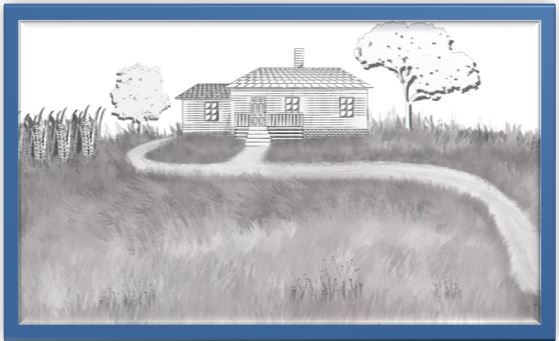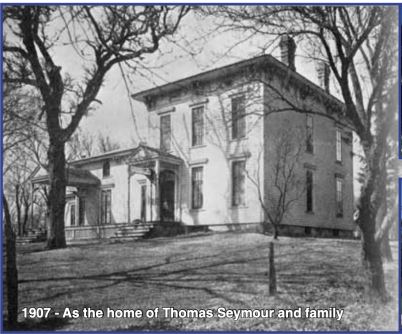When the last glacier receded, it left behind a series of moraines, one of which is Union Ridge, running along present-day Narragansett, Nagle, Newark Avenues and Waukegan Road. The Noble-Seymour-Crippen House is located on this ridge, one of the highest points in the area, and once the shoreline of glacial Lake Chicago.

In 1833, on Union Ridge, early settlers Mark and Margaret Noble built their home, now the oldest existing house in Chicago. Unlike many early farmhouses constructed of logs, the Noble home was constructed of sawn lumber from their Bickerdike-Noble Sawmill, located on the Des Plaines River.
Over the years, the property was occupied by various owners. In 1868, Thomas and Louise Seymour purchased the Noble house and adjacent property. Shortly thereafter, to accommodate their large family and servants, they enlarged the house by building an Italianate addition on the north side of the house.

In 1916, Charlotte and Stuart Crippen purchased the property from Louise Seymour. Initially, their home was only a summer residence without plumbing or electricity. By 1918, with the addition of these modern conveniences, they made Norwood Park their permanent residence. During the Depression, following Charlotte’s death and Stuart’s remarriage and relocation to Alabama, the house was divided into two residences occupied by Stuart and Charlotte’s two sons, Stuart, Jr. and Paul, and their families.
On December 31, 1987, subsequent to a lengthy fund-raising campaign, the Norwood Park Historical Society purchased the house and the remaining 1.7 acres of land from the estate of Agnes Crippen, widow of Stuart Crippen, Jr. By July 1988, the Society had transformed the residence into its headquarters, museum, archives, and meeting space for educational programs and other events.
In cooperation with the Illinois Historic Preservation Agency and thanks to State Senator Walter Dudycz and State Representative Ralph Capparelli, the Society received grants from the State of Illinois to restore the entire house and make landscaping improvements. To comply with grant requirements, a date of significance had to be chosen on which to base the restoration. The year 1920 was selected as this date, so that once again the house could be a single-family dwelling, complete with plumbing and electricity. Modifications were made to both the interior and exterior of the house, and completed in 2000.
A major component of the project was returning the interior walls, windows and doors to their original configuration. Based on archeological excavations, a summer kitchen was rebuilt on the location of its original foundation. Several modernizations were made, including central air-conditioning, fire suppression sprinklers, and a handicapped accessible restroom. Outdoor improvements included a handicapped accessible ramp, brick walkways, parking lot edging, and a new fence along the south and west property lines. Diseased, distressed and invasive trees and shrubs were eliminated and new trees were planted. Additionally, the recycling area was relocated, electrical power was extended to various exterior locations and an irrigation system was installed.
As anyone who has restored an old house knows, there are many unknowns at the beginning of a project, many surprises along the way, and countless cost overruns. The restoration of the Noble-Seymour-Crippen House was no exception. Although the generous grants allowed the Society to accelerate the restoration schedule by many years, the costs exceeded them.
The Norwood Park Historical Society is an independent self-supporting not-for-profit organization, relying solely on membership, donations and fundraising. The Society continues to need your assistance and financial support to complete the restoration, maintain the house and property, create museum exhibits, provide educational programs, respond to research requests and preserve our unique neighborhood’s history for generations to come.

